Key messages
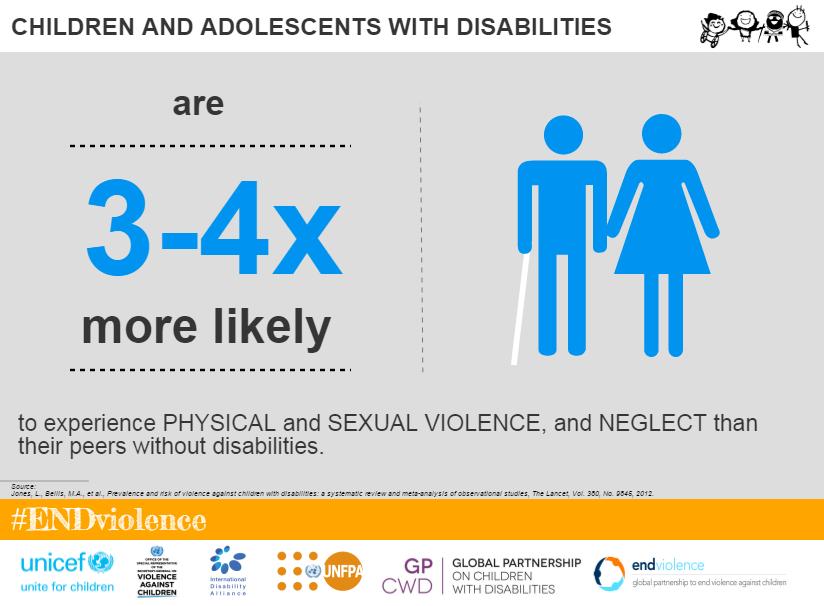
1. Children and adolescents with disabilities are 3 to 4 times more likely to experience physical and sexual violence and neglect than children without disabilities. To end violence against children by 2030, we need to count all children under SDG target 16.2, including those with disabilities.
2. Children and adolescents with disabilities are at significantly increased risk of experiencing sexual violence: up to 68% of girls and 30% of boys with intellectual or developmental disabilities will be sexually abused before their 18th birthday. To end sexual violence against children and adolescents with disabilities we need to:
a. Include children with disabilities in national child protection laws, systems and policies, in line with international and regional human rights law.
b. Invest in free, accessible and high-quality services that prevent and respond to sexual violence against children with disabilities.
c. Address stigma and discrimination that prevent children with disabilities who have experienced sexual violence, from accessing services and redress.
d. Ensure safe, anonymous and accountable reporting mechanisms for all children, including those with disabilities to report abuse.
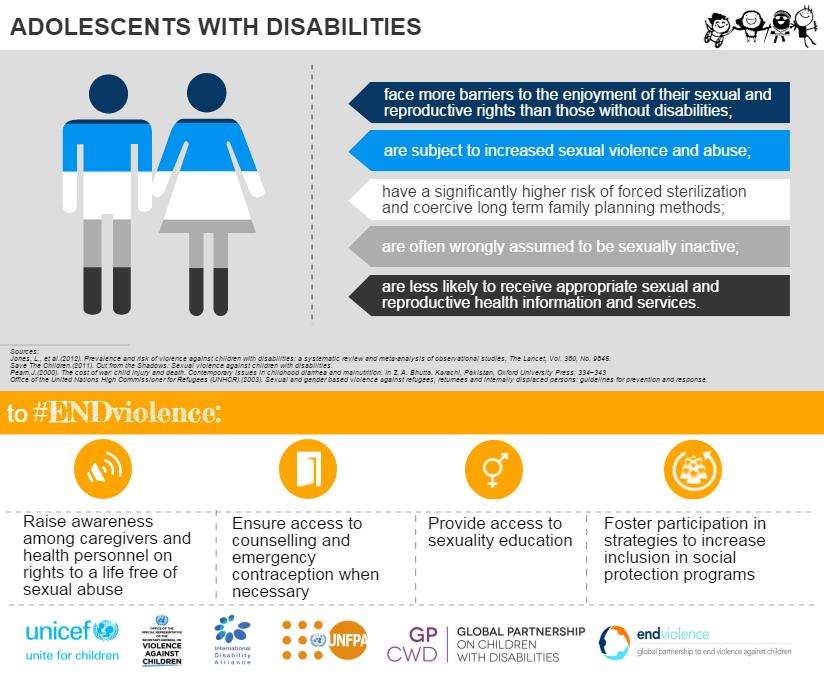
3. Children with disabilities are up to 17 times more likely to live in an institution than their peers without disabilities. The risk of violence, neglect and abuse in institutions and orphanages is much higher than when living at home or in a community. End the institutionalisation of children by supporting families and providing inclusive community-level services particularly in health, education and social protection. Implement the UN Guidelines for the Alternative Care of Children, including the development of standards and training for all caregivers.
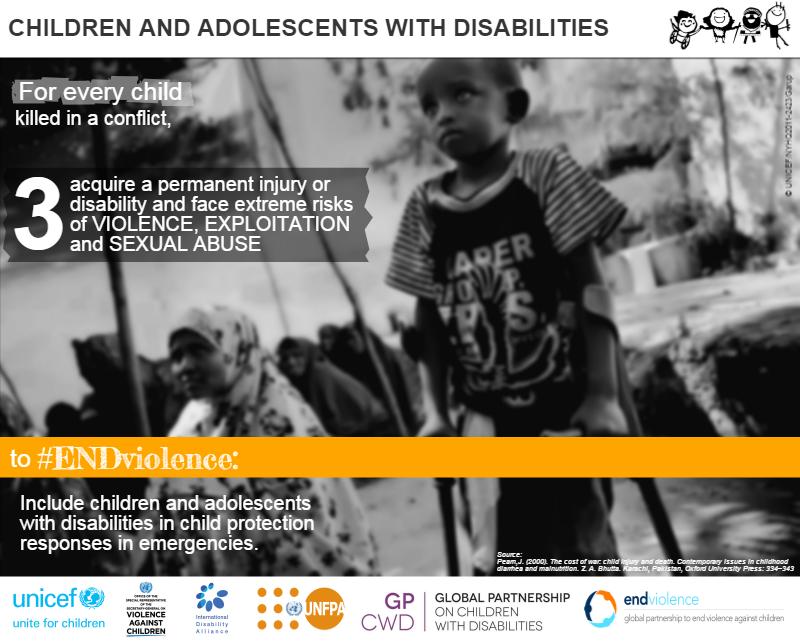
4. For every child killed in conflict, three acquire a permanent injury or disability. In the aftermath of disasters, children with disabilities are more likely to become separated from their careers and are extremely vulnerable to violence, exploitation and sexual abuse. Child protection responses in emergencies need to be fully inclusive of children with disabilities to ensure that no child is left behind.
5. Despite being one of the most vulnerable groups, infants, children and adolescents with disabilities are often excluded and invisible from data collected on violence. Every study related to violence against children should include children with disabilities to make them visible and data should be disaggregated by disability, age and gender.
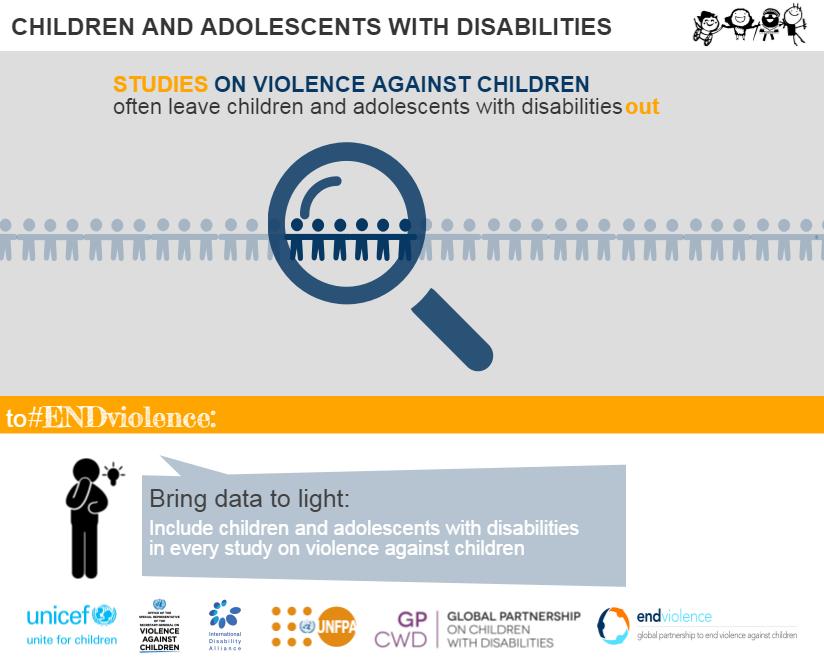
6. Adolescents and young persons with disabilities face more barriers to the enjoyment of their sexual and reproductive rights than those without disabilities. They are subject to increased sexual violence and abuse, and they also have a significantly higher risk of forced sterilization and coercive family planning methods, or are wrongly assumed to be sexually inactive. On the other hand, they are less likely to receive appropriate sexual and reproductive health information and services. To prevent this, efforts should be directed at:
a. Raising awareness among families, caregivers and health personnel of the rights of adolescents and young persons with disabilities to a life free of sexual abuse.
b. Access to counselling and the emergency contraception when necessary.
c. Access to sexuality education.
d. Foster the participation of adolescents with disabilities in the design and implementation of strategies to increase the inclusion of young persons with disabilities in social protection programs.
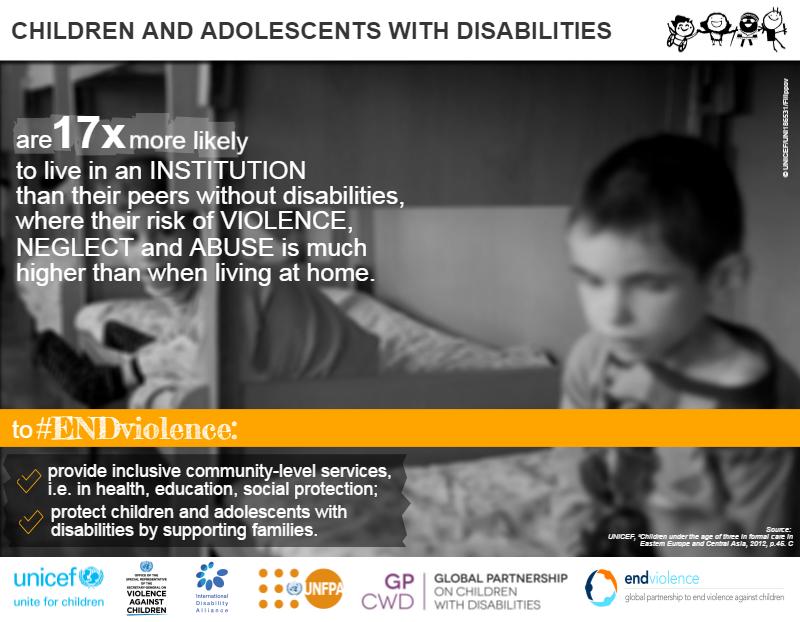
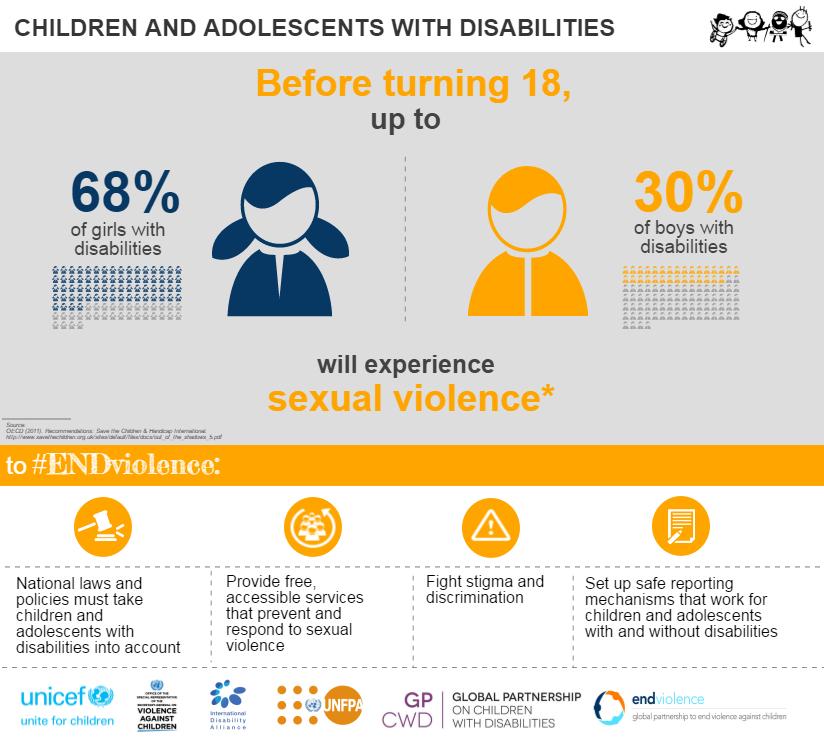
Ens notes
1 Jones, L., Bellis, M.A., Wood, S., Hughes, K., McCoy, E., Eckley, L., Bates, G., Mikton, C., Shakespeare, T., Officer, A. (2012) Prevalence and risk of violence against children with disabilities: a systematic review and meta-analysis of observational studies. The Lancet, Vol. 380, No. 9845.
2 OECD. Recommendations: Save the Children and Handicap International (2011). Out from the shadows. Sexual violence against children with disabilities. Available at: http://www.savethechildren.org.uk/sites/default/files/docs/out_of_the_shadows_5.pdf. Retrieved: 30 November 2015.
3 UNICEF (2012) Children under the age of three in formal care in Eastern Europe and Central Asia, p.45. Available at: http://www.unicef.org/ceecis/UNICEF_Report_Children_Under_3_FINAL.pdf. Retrieved: 30 November 2015.
4 Pearn, J. H. (2000). The cost of war: Child injury and death. In Z. A. Bhutta (Ed.), Contemporary Issues in Childhood Diarrhoea and Malnutrition 1st ed. (pp. 334-343) Pakistan: Oxford University Press
5 Office of the United Nations High Commissioner for Refugees (UNHCR) (2003). Sexual and gender based violence against refugees, returnees and internally displaced persons: guidelines for prevention and response. Available at: http://www.unhcr.org/3f696bcc4.html. Retrieved: 30 November 2015. .
6 UNICEF (2005). Violence against Children with disabilities: UN Secretary General’s Report on Violence against Children. Thematic Group on Violence against Children with disabilities. Available at: http://www.unicef.org/videoaudio/PDFs/UNICEF_Violence_Against_Disabled_Children_Report_Distributed_Version.pdf. Retrieved: 30 November 2015.
7 UNFPA (2007) Emerging issues: sexual and reproductive health of persons with disabilities. New York: UNFPA
8 World Bank/Yale (2004) Global Survey on AIDS and Disability. Washington DC: World Bank. http://siteresources.worldbank.org/DISABILITY/Resources/Healthand-Wellness/HIVAIDS.pdf
9 Groce, N. (2005). HIV/AIDS and Individuals with Disability: Findings from the World Bank/Yale Global Survey. Health and Human Rights, 8(2), 215-224; Hanass-Hancock, J. (2009) Disability and HIV/AIDS – a systematic review of literature on Africa. Journal of the International AIDS Society. Nov 13;2(1).

